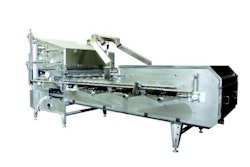Through his distinguished and productive career, Dr. Flock has been affiliated with the Lohmann Breeding Company in Germany and Hy-Line International in the United States.
Caged systems lower losses
Comparisons between caged and floor systems in German random-sample tests demonstrated higher mortality, especially due to cannibalism, lower hen-housed egg production and correspondingly inferior feed conversion in floor-housed hens.
In five trials, hens which had been beak-trimmed showed 2.4% losses due to cannibalism. In contrast, floor hens subjected to the same conditions but without beak-treatment showed a six-fold increase in losses. The performance of floor-housed flocks may also be apparently lower than in cages due to loss of eggs in litter and through slats.
Wide range of mortality
An analysis of 34 commercial flocks on 17 farms in Germany, ranging in size from 500 to 20,000 hens, showed a wide range in mortality on floor systems extending from 13% to 18%, compared to an average of 8% in conventional cages. White-egg hens averaged 89% production compared to 77% for brown-egg strains.
Conclusions from the analyses included:
- Variability in performance with floor systems has economic implications,
- Peak treatment is required to limit cannibalism and feather pecking,
- Egg quality is adversely affected in floor systems compared to cages, and
- The lowest performance levels were recorded using free-range housing.
An important conclusion from the analysis was that housing for rearing flocks should correspond to the laying units to which they will be transferred with respect to equipment and lighting.
Floor systems require more feed/fuel
Data comparing caged and floor-housed flocks clearly demonstrated inferiority in hen- housed egg production, irrespective of strain. More feed and fuel are required to produce the same number of eggs using floor systems. This disparity must be compensated by a price differential to ensure an acceptable return on investment and labor committed to floor production.

















